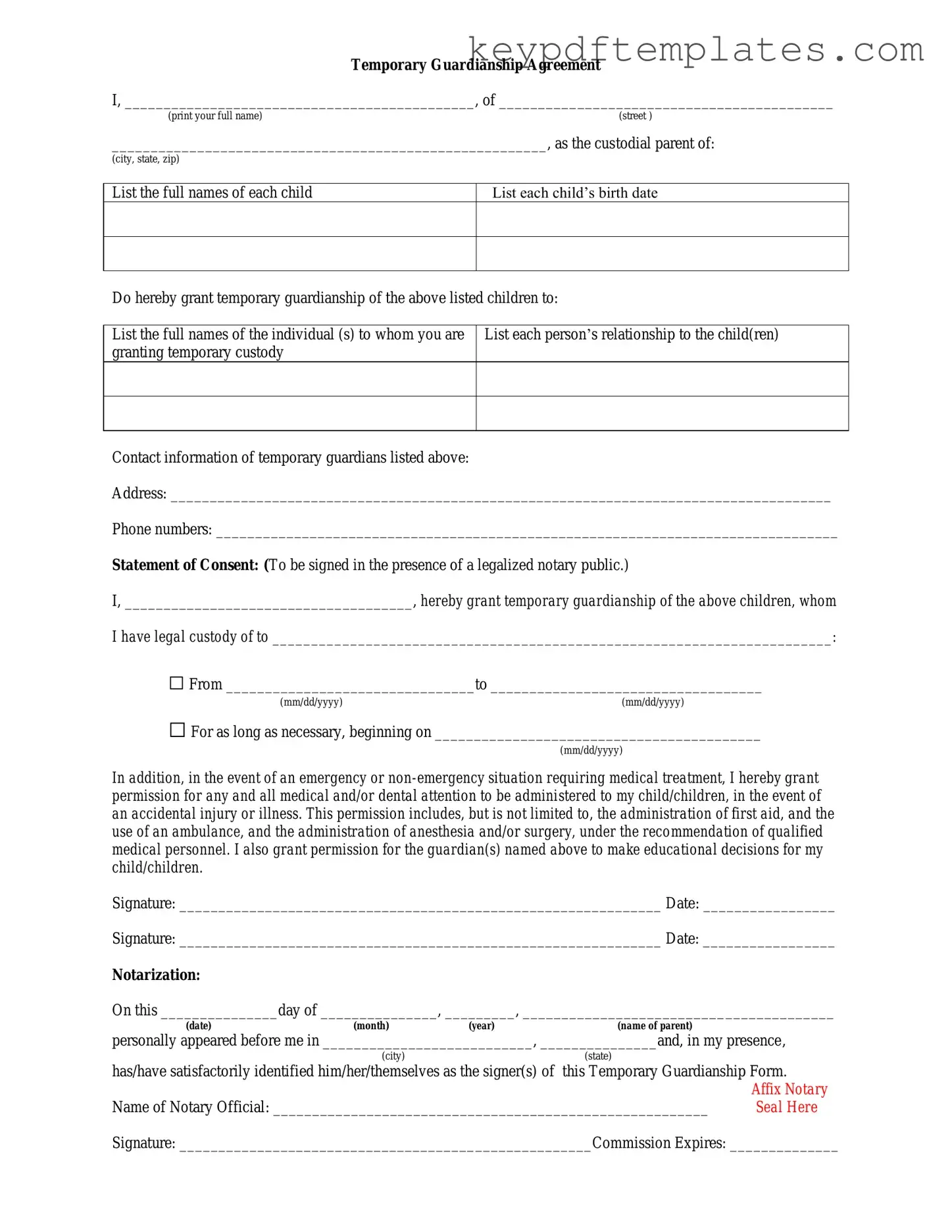Get Temporary Custody Form
The Temporary Custody form is a legal document used to grant one parent or guardian temporary authority over a child’s care and upbringing. This form is often utilized in situations where a child cannot remain with their primary caregiver, ensuring their well-being during transitions. Understanding how to properly complete and submit this form is crucial for those navigating custody issues.
Modify Document Online
